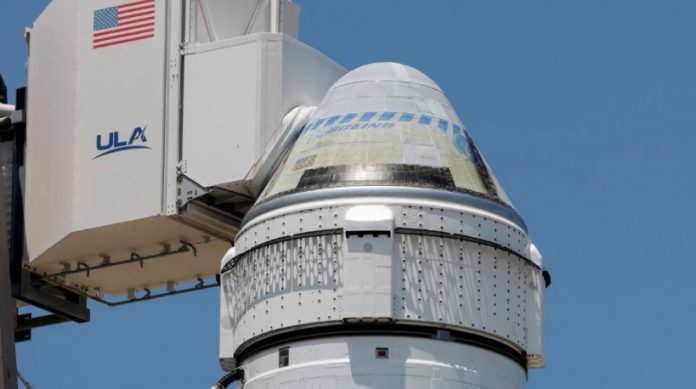ยานอวกาศ สตาร์ไลเนอร์ (Starliner) ของ Boeing เผชิญกับความล่าช้าอีกครั้งในภารกิจที่มีลูกเรือคนแรกที่หลายคนรอคอย ซึ่งขณะนี้ถูกเลื่อนออกไปอย่างน้อยหนึ่งสัปดาห์เนื่องจากฮีเลียมรั่วในโมดูลบริการซึ่งสืบมาจากหน้าแปลนของทรัสเตอร์ตัวเดียว โดยวันเปิดตัวเป้าหมายใหม่คือไม่ช้ากว่า 16:43 น. EDT ในวันอังคารที่ 21 พฤษภาคม อยู่ระหว่างการทดสอบเพิ่มเติม การทดสอบการบินของลูกเรือนี้อาจเป็นเหตุการณ์สำคัญครั้งสุดท้ายของโบอิ้งก่อนที่ NASA จะอนุมัติยานอวกาศสำหรับการปฏิบัติการตามปกติภายใต้โครงการลูกเรือเชิงพาณิชย์ Boeing และ NASA กำลังทำงานเพื่อแก้ไขปัญหาการรั่วไหลของฮีเลียม โดยจะมีการทดสอบการวางแผนของ Boeing การตรวจสอบข้อมูลจากความพยายามเปิดตัวเมื่อวันที่ 6 พฤษภาคมยังไม่พบปัญหาอื่นๆ นักบินอวกาศของนาซ่า Sunita Williams และ Butch Wilmore ซึ่งมีกำหนดพักอยู่ที่สถานีอวกาศนานาชาติเป็นเวลา 1 สัปดาห์ ได้ออกจากการกักกันก่อนการบินช่วงสั้นๆ เมื่อวันที่ 10 พฤษภาคม เพื่อไปเยี่ยมครอบครัวของพวกเขาในฮูสตัน ตามรายงานของโบอิ้ง พวกเขาจะกลับไปที่ศูนย์อวกาศเคนเนดีของ NASA ในฟลอริดาในไม่ช้า
กิจกรรมที่กำลังจะเกิดขึ้นนี้ถือเป็นจุดสุดยอดของความพยายามที่ยาวนานนับทศวรรษของโบอิ้งในการพัฒนายานอวกาศที่สามารถขนส่งนักบินอวกาศไปและกลับจากสถานีอวกาศนานาชาติภายใต้โครงการเชิงพาณิชย์ของ NASA ตามที่ผู้ดูแลระบบ NASA บิล เนลสัน การปล่อยยานอวกาศจะเป็นเพียงการเดินทางครั้งที่ 6 ของยานอวกาศที่มีลูกเรือในประวัติศาสตร์สหรัฐฯ ดังที่เน้นในการแถลงข่าวเมื่อเร็วๆ นี้ เนลสันสรุปความก้าวหน้าจาก โปรเจกต์ Mercury สู่ Gemini Apollo the Space shuttle DragonของSpaceX และปัจจุบันคือสตาร์ไลเนอร์ ของ Boeing ได้รับการออกแบบมาเพื่อแข่งขันกับแคปซูล Crew Dragon ของ SpaceX และขยายทางเลือกของสหรัฐอเมริกาสำหรับการขนส่งนักบินอวกาศไปยัง ISS ผ่านการร่วมมือกับพันธมิตรในอุตสาหกรรมเอกชน โดยเฉพาะอย่างยิ่งนักบินอวกาศ Williams จะสร้างประวัติศาสตร์ในฐานะผู้หญิงคนแรกที่เข้าร่วมในภารกิจครั้งนี้
ความคืบหน้าของ สตาร์ไลเนอร์ ไปยัง Launchpad ถูกขัดขวางจากความล้มเหลวต่างๆ ในขณะที่ SpaceX ได้กลายเป็นผู้ให้บริการขนส่งหลักของ NASA สำหรับนักบินอวกาศ แม้ว่าวาล์วจะถูกเปลี่ยนแล้ว แต่ความล้มเหลวครั้งใหม่ก็เกิดขึ้น นั่นคือฮีเลียมรั่วในยานอวกาศสตาร์ไลเนอร์ หากการปล่อยเป็นไปตามแผนที่วางไว้ในสัปดาห์หน้า ยานอวกาศจะแยกตัวออกจากจรวดหลังจากถึงวงโคจรและมุ่งหน้าไปยังสถานีอวกาศ นักบินอวกาศWilliams และ Wilmoreจะใช้เวลาประมาณหนึ่งสัปดาห์บนสถานีก่อนที่จะเดินทางกลับมายังโลกด้วยแคปซูลสตาร์ไลเนอร์ลำเดียวกัน โดยลงจอดทางตะวันตกเฉียงใต้ของสหรัฐอเมริกา
The planned crewed launch of the Starliner spacecraft, which would have been historic, has been postponed once more due to a helium leak discovered in the Boeing spacecraft.

Boeing’s Starliner spacecraft faces another delay in its highly anticipated first crewed mission, now postponed by at least a week due to a helium leak in the service module traced to a single thruster’s flange. The new target launch date is no earlier than 4:43 p.m. EDT on Tuesday, May 21, pending additional testing. This Crew Flight Test could be Boeing’s final milestone before NASA approves its spacecraft for routine operations under the Commercial Crew Program. Boeing and NASA are working to resolve the helium leak issue, with Boeing planning tests. Review of data from a May 6 launch attempt has not revealed other issues. NASA astronauts Suni Williams and Butch Wilmore, scheduled for a weeklong stay at the International Space Station, briefly left preflight quarantine on May 10 to visit their families in Houston, according to Boeing. They will return to NASA’s Kennedy Space Centre in Florida shortly.
The upcoming event marks the culmination of Boeing’s decade-long endeavour to develop a spacecraft capable of transporting astronauts to and from the International Space Station under NASA’s commercial program. According to NASA Administrator Bill Nelson, the launch would be only the sixth inaugural voyage of a crewed spacecraft in US history, as highlighted in a recent news conference. Nelson outlined the progression from Mercury to Gemini, Apollo, the space shuttle, SpaceX’s Dragon, and now Starliner. Boeing’s Starliner is designed to rival SpaceX’s Crew Dragon capsule and expand US options for astronaut transportation to the ISS through collaboration with private industry partners. Notably, astronaut Williams will make history as the first woman to participate in such a mission.
Starliner’s progress to the launchpad has been hampered by various setbacks, while SpaceX has become NASA’s primary transportation provider for astronauts. Although the valve has been replaced, a new setback emerged—a helium leak in the Starliner spacecraft. If the launch proceeds as planned next week, the spacecraft will detach from the rocket after reaching orbit and head towards the space station. Astronauts Williams and Wilmore will spend about a week aboard the station before returning to Earth in the same Starliner capsule, landing in the southwestern United States.
By CNN NEWS

















